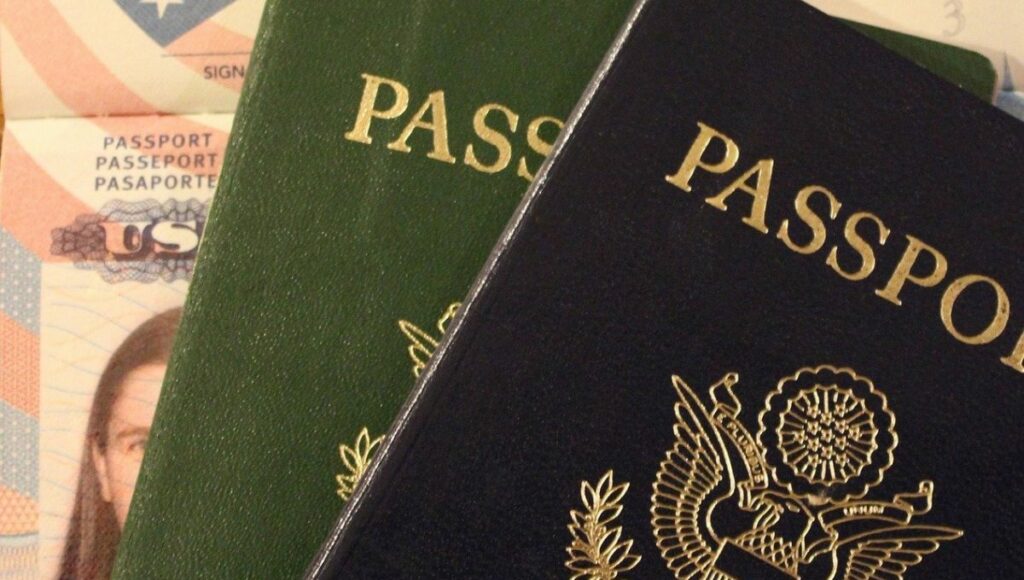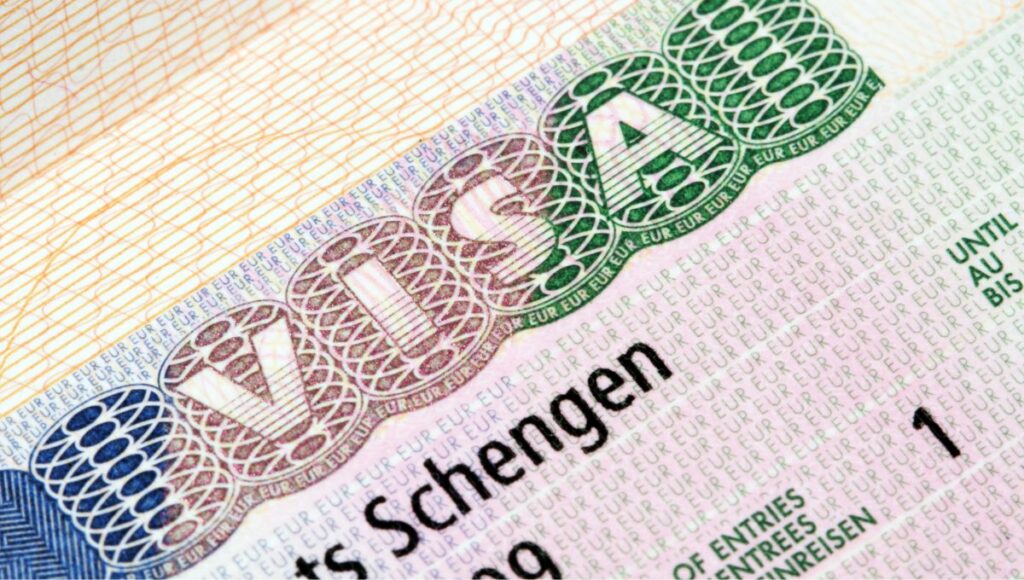If you are planning a visit to the beautiful country of Spain, understanding how do you get a Spanish visa is essential. Whether you are relaxing (or partying) in the Baleric Islands, attending business meetings in Madrid, or just here to enjoy the wonderful Spanish wine and food, you may well need a visa.
I have identified three key groups of travellers with different entry requirementswhen travelling to Spain. I’ll cover each one to help you understand which group you are in and what you need to know about if you need and how to get a Spain tourist visa.
If you are visiting, you must also understand things like the Schengen zone, the maximum number of days you can stay, the number of entries you can get, passport validity and more. In this post, I’ll cover everything with additional tips and links to help you plan and hopefully leave you with one less thing to worry about when planning your adventure.
So, let’s start by first understanding if you need a visa and clear up a few bits of terminolgy that you may find confusing to wrap your head around.
Note – Please remember that in this post, I cover tourist visas only and do not include a work visa or the various visas required to live in Spain.

Do You Require A Visa For Spain?
There are 3 types of travellers and depending on where you fit in, will answer this question:
- Schengen Area Residents/Citizens: If you are a resident or citizen of one of the Schengen countries, you can travel freely within the Schengen Area with a passport or National ID Card without needing additional visas or travel authorizations, so you do not need a visa to visit Spain.
- Visa-Exempt Countries: Travelers from countries that have visa exemption agreements with the Schengen Area do not need a visa for short stays (up to 90 days within a 180-day period) for tourism, business, or family visits. However, starting in mid-2025, you will require an ETIAS (European Travel Information and Authorization System) authorization to enter the Schengen Area. This will include countries like the United States, Canada, Australia, and the United Kingdom.
- Rest of the World Needing a Visa: Travelers from countries that do not have visa exemption agreements with the Schengen Area will need to apply for and obtain a Schengen visa before arrival for any short stay. This process involves meeting specific requirements and potentially attending an interview at the consulate or embassy of the Schengen country they plan to visit first or where they intend to spend the most time.
OK, so I have talked there about a few things that may need a bit more explanation. Before listing which country falls into which category, here’s a bit more background.
EU vs Schengen Area
Now, you may have come across both of these and be a little confused, so let me break down the differences for you before we go too far:
- European Union (EU): The EU is a political and economic union of 27 European countries (at the time of writing in Spring 2024) that are committed to regional integration. EU policies aim to ensure the free movement of people, goods, services, and capital within the internal market; enact legislation in justice and home affairs; and maintain common policies on trade, agriculture, fisheries, and regional development.
- Schengen Area: The Schengen Area, on the other hand, is a zone that includes 26 European countries that have abolished passport and all other types of border control at their mutual borders. The Schengen Agreement allows for the free movement of individuals within the area, for short stays (up to 90 days in any 180-day period) for tourists, without the need for internal border checks.
Not all EU countries are part of the Schengen zone. For example, Bulgaria, Croatia, Cyprus, Ireland, and Romania are all in the EU, but not part of the Schengen area, so residents would fall into the bnext category of visitors.
Likewise, not all Schengen areas are in the EU, for example, Iceland, Liechtenstein, Norway and Switzerland are in the Schengen area but are not EU member states.

Spain Visa or Schengen Visa?
One final point to hopefully clear up any confusion is the difference between the terms “Spain visa” and “Schengen visa”, which are often used interchangeably.
- Schengen Visa: I have already spoken about the Schengen area, so as you can probably conclude, a Schengen visa is a short-stay visa that allows a person to travel to any member of the Schengen Area per stay of up to 90 days for tourism or business purposes within a 180-day period. This visa is standardized and issued by any of the Schengen member countries. If you plan to visit several Schengen countries in one trip, you should apply for your Schengen visa at the consulate of the country which is your main destination or where you will spend the most days.
- Spain Visa: so, it makes sense that a “Spain visa” refers to a Schengen visa issued by Spain. This means that Spain is the main destination, or the first entry point for the visit. While the visa follows the Schengen visa guidelines, it is processed and approved by Spanish consular services. Therefore, a Spain visa is essentially a Schengen visa with Spain as the designated main destination or point of entry.
OK – so now we have cleared up a lot of the terms, lets take a look at which countries fall where.
Schengen Area Countries
If you are a citizen or resident of one of these countries, you are able to visit Spain with no visa or requirement for pre-screening. These are the sull Schengen Member Countries
- Austria
- Belgium
- Croatia
- Czech Republic
- Denmark
- Estonia
- Finland
- France
- Germany
- Greece
- Hungary
- Iceland
- Italy
- Latvia
- Liechtenstein
- Lithuania
- Luxembourg
- Malta
- Netherlands
- Norway
- Poland
- Portugal
- Slovakia
- Slovenia
- Spain
- Sweden
- Switzerland
Visa-Exempt Countries
Visa-exempt countries are those whose citizens do not require a visa to enter the Schengen zone. The duration of a visa-free stay and the allowed activities (such as tourism or business, but not employment) vary by destination and agreement between countries.
These countries include, but are not limited to, Argentina, Australia, Canada, Brazil, Chile, Colombia, Costa Rica, the United States, United Kingdom, Japan, Malaysia, Mexico, New Zealand, Singapore, South Korea, UAE, Uruguay, and Venezuela.

Understanding ETIAS in prepration for 2025
With the arrival of ETIAS expected in mid-2025, passport holders from many countriesthat currently travel visa-free, including all of the Visa-exempt countries above, will require an ETIAS waiver to travel to Spain.
ETIAS stands for the European Travel Information and Authorization System, a new travel authorization for visitors to the Schengen Area, which includes Spain. It’s not a visa in the traditional sense but a pre-travel screening process for visa-exempt visitors to ensure they do not pose a security risk, similar to the ESTA for visiting the USA or the eTA in Canada.
They are planned to be coming into effect and be required from Mid-2025.
The application process for ETIAS will be entirely online. Applicants must provide personal information and travel details and answer security questions. This system aims to strengthen the EU’s external borders by identifying any risks associated with visa-free travellers before they arrive.
Rest of the World Needing a Visa
There are approximately 107 countries whose citizens require a visa to visit Spain. Nationals from countries like Afghanistan, Algeria, Bangladesh, China, Egypt, India, Iran, Iraq, Nigeria, Pakistan, Russia, Syria, Turkey, and many others need to apply for a Schengen visa in person at a Spain Embassy to enter for short stays (up to 90 days within a 180-day period).
Use the map below powered by etias.com to see if you require an ETIAS before travel.
Spain Visa Types for Tourists
So, hopefully, now you know if you need a visa or not, let’s move on to the types of visas you can get before wrapping up with what you need to do to get one. As I mentioned earlier in this post, there are many types of visas you can get for long stays or work, but for this post, we’re just focusing on visiting either for tourism or business.
There are three types of Schengen visas for tourists: single-entry, double-entry, and multiple-entry.
A single entry visa is just as its name states. This visa allows you to enter the area one time. Once you leave, you cannot re-enter with this same visa. You will need to apply for another visa. Therefore, you should consider the double-entry visa.
A double entry visa is just as its name states. You can exit the country and reenter the country one more time with the same visa.
The multiple entry visa is issued for one, three, or five years. Individuals with these visas can enter and exit as often as they want as long as they don’t violate the number of days allowed, the 90/180-day rule.
The 90/180 rule restricts visitors to the Schengen Area, including Spain, to stays of up to 90 days within any 180-day period starting from the day of first entry. Overstaying beyond 90 days can lead to immigration sanctions, so it is essential to carefully track your arrival and departure dates to comply.

Spanish Visa Requirements And how To Get One
So now you know what, let’s focus on how.
To get your tourist visa españa is quite simple, albeit with a bit of paperwork and a visit to a consulate.
As a general rule, you should apply for a visa at the Consulate with the country in which you legally reside. In addition, You should apply at the Consulate of the country you intend to visit. If you intend to visit more than one Schengen States, you should apply at the Consulate of the country where you will spend the longest period of time or, if you intend to visit several Schengen States and the stays will be of equal length, you should apply at the Consulate of the first country you will visit.
Here is a page that lists the Spanish consulates worldwide and provides contact details to make an appointment: Embassies and Consulates.
Once you have your visa appointment at your Consulate of Spain, you will need to prepare the following supporting documents to avoid any risk of a visa denial during you visa interview:
- A completed visa application form, here is a sample – don’t use this as it may not be up to date but should give you an idea of what to expect: Application for Schengen Visa
- Two photos
- The Spain visa photo size is a standard passport size (width: 35mm, height: 45mm) and in compliance with ICAO standards.
- Spain visa photo requirements are that photos are on a white background and the head height (up to the top of the hair) is 34.5mm. The distance from the top of the photo to the top of the hair is 3mm.
- A valid passport with biometric data- The passport’s expiry date should be at least 3 months after the date of your departure from the Schengen area. In the case of multiple-entry visa, the passport’s expiry date should be at least 3 months after your departure from the last country visited.
- Copies of your travel transportation (pre-booked return tickets)
- Proof of medical or travel insurance covering emergencies, hospitalisation and repatriation (in case of death).
- Proof of financial means to support yourself during your stay.
- A letter explaining the reason for your visit to Spain and your detailed itinerary.
- Hotel booking confirmation
- Additional documents can be requested by the Consulates such as civil status proof (birth certificate and/or marriage certificate)
Additional considerations
Employed Individual – If you are employed, you may be required to include your income tax statement, bank statements for the past six months, and a copy of your work contract.
Self-employed Individual – If you are self-employed or a business owner you will need to provide your income tax statement, bank statements for the past six months, and a copy of your business license.
Student – Students are required to prove enrollment in an educational institute, along with an approved letter from the school for you to leave. This student visa to Spain (a student from another country going to Spain) is not to be confused with the Student Visa Spain (an individual going to Spain to study as a student -this will be discussed in another article).
Retired Individuals – If you are retired, you will need to include a pension statement for the past six months along with your Spain visa form.
Under-aged children requirements – Underaged children must have documents that provide proof of parental consent to travel if traveling alone. Parents traveling with underage children need to provide proof of income and adequate funds for the duration of the trip. If both parents are not traveling together, travel consent forms from the other parent are also required.

Entry Requirements For Visitors To Spain
Great – so you have done the above, you have your visa and you’re ready to travel, but slow down there, it’s not quite all over yet!
Even though you have your visa, there is a chance, albeit a small one, that when you land, you may not meet the entry requirements and can be refused entry. Understanding and meeting the entry requirements is a critical last step to ensure a smooth entry into the country and the broader Schengen Area. Here are the key requirements you should be aware of:
- Valid Biometric Passport: Must be valid for three months beyond the intended departure date from the Schengen area and issued within the last ten years. For example, if you plan to leave the Schengen area on June 1st, your passport should be valid until at least September 1st.
- Schengen Visa (if required): I probably don’t need to mention this, but just incase, don’t forget to bring your visa!
- Financial Means: Evidence showing you have enough money to support your stay. Foreigners who intend to enter the national territory must continue to prove that they have a minimum amount of 100 euros per person per day, and those who intend to stay in Spain with a minimum of 900 euros or its legal equivalent in foreign currency (source). Acceptable proof includes bank statements or a credit card accompanied by the latest credit card statement, however, it is highly unlikely this will be asked.
- Proof of Accommodation: Confirmation of where you will stay during your visit, such as hotel reservations, rental agreement, or an invitation letter from a host. An Airbnb reservation confirmation is a common example.
- Return or Onward Travel Ticket: You may be asked to show a flight itinerary proving your intention to leave Spain before the 90-day limit expires. For example, a round-trip flight reservation to and from your home country.
- Evidence of your Health Insurance Policy: Again, this is unlikely as it will be needed to get your vaisa approved, but it can be asked for. Well, in above all, you’ll want it with you incase you need it, so don’t forget that!
Not all travelers are systematically checked for these requirements upon entry, in fact, you’d be pretty unlucky to be singled out. However, if you are, failing to meet them if asked can result in being denied entry and sent back to your country of origin. So, it’s important to be prepared and carry all necessary documents and proofs to avoid any issues upon arrival.
Important note: These requirements can change based on the current global health situation (Remember COVID?) and policy updates. Always check the latest information before your trip to ensure compliance with the most current requirements.
How Much is the Spain Tourist Visa Fee?
At the time of writing:
- 80€ for adults
- 40€ for children aged 6-12
But, you should check with the Spanish Embassy in your home country before you apply for a visa to Spain. The Spain visa fees can change at any time and they vary dramatically depending on the country of your citizenship.

FAQ’s
How long is a Spain tourist visa valid?
A Spanish visa or Schengen visa is generally valid for up to 90 out of 180 days. This means you can not stay in Spain or any of the Schengen countries for a combined total of 90 out of every 180 days.
How long does a Spain tourist visa take or what is tourist visa processing time for Spain?
Most times a short-term visa or tourist visa is completed within 15 days. However, it may take 30 or 60 days in some cases. You cannot apply more than 6 months before your date of travel.
How do I easily get a tourist visa for Spain?
Again, you will need to apply at the correct consulate, complete the application forms, attach the required documents, and wait for your approval.
Can I get a tourist visa for Europe?
You will want to apply for a visa in the country you will be spending most of your time. You will be allowed to visit all the Schengen countries with your visa. Keep in mind you can only stay for the time stated on your visa (usually 90 days) in total through all the countries, not each country.
You can find a bunch more helpful FAQs on this document helpfully produced by the EU: Schengen Visa FAQs.
Wrapping up
I hope I have helped you understand a bit more about obtaining a tourist visa for Spain. Or maybe I’ve just made it worse! I hope not.
As you can see, I does require some careful planning and adherence to specific guidelines, but with a bit of preparation and starting the application process well in advance of your trip you will be well on your way to exploring the vibrant culture, stunning landscapes, and rich history of Spain.
Whether you’re drawn to the bustling streets of Barcelona, the historic heart of Madrid, or the serene beaches of the Costa del Sol, securing your tourist visa is your first step toward a journey filled with exploration and discovery in one of Europe’s most beloved destinations (and my home).



